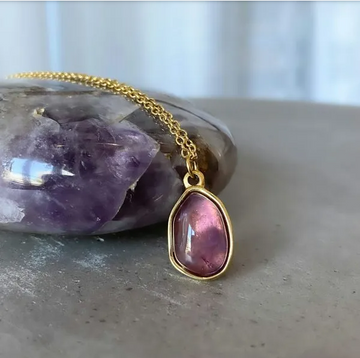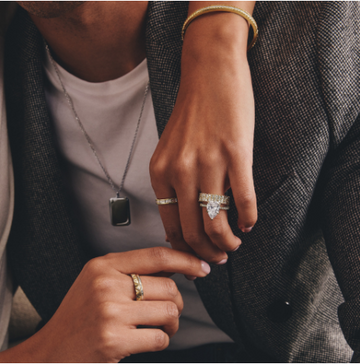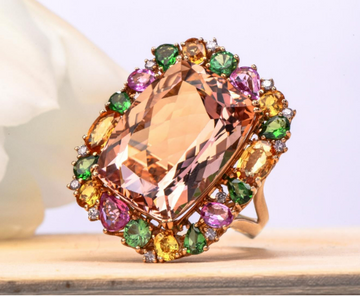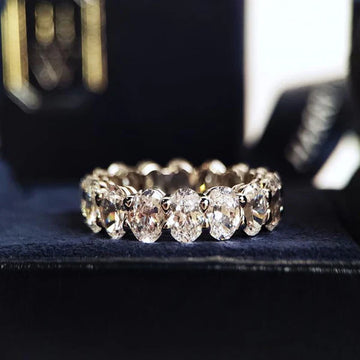The mesmerizing beauty of a pink diamond is undeniable. Whether it’s a delicate blush or a vibrant fuchsia, the allure of these rare gems is captivating. But a common concern among owners and prospective buyers is: Will my pink diamond fade over time? The answer is nuanced, dependent on several factors, and requires a deeper understanding of the science behind diamond color stability.
This blog will delve into the factors that can influence the color stability of pink diamonds, offering you the knowledge to make informed decisions and care for your cherished gemstone.
I. Natural vs. Treated Pink Diamonds: A Crucial Distinction
The first and most important distinction to make is whether the pink diamond is natural or treated. This has a significant impact on its long-term color stability.
- Natural Pink Diamonds: These diamonds acquire their pink color naturally, due to structural anomalies (plastic deformation) in the crystal lattice. As a general rule, naturally colored pink diamonds are highly stable and unlikely to fade significantly over time with proper care. The structural defects that create the color are permanent features of the diamond’s crystal structure.
-
Treated Pink Diamonds: Some pink diamonds have their color enhanced or created through artificial treatments. These treatments can include:
- Irradiation: Exposing a diamond to radiation can alter its color, including creating pink hues.
- High-Pressure/High-Temperature (HPHT) Treatment: This process can improve or alter the color of some diamonds, including turning some brown diamonds pink.
- Coating: Applying a thin coating of colored material to the surface of a diamond to impart a pink hue. This is the least stable treatment method.
Crucially, the color stability of treated pink diamonds varies greatly depending on the treatment method used. Coating is generally the least stable, while some irradiation and HPHT treatments can produce relatively stable colors.
Pink Diamond
II. Factors Affecting Color Stability of Treated Pink Diamonds
Even among treated pink diamonds, several factors influence their long-term color stability:
- Type of Treatment: As mentioned above, the type of treatment is paramount. Coated diamonds are highly susceptible to color fading or scratching, while some advanced irradiation and HPHT treatments can create more stable colors.
- Intensity of Treatment: The degree to which a diamond is treated can also impact color stability. More intense treatments may result in more vibrant colors but potentially lower stability.
- Quality of Treatment: The skill and expertise of the gemologist performing the treatment is crucial. Poorly executed treatments are more likely to result in unstable colors.
- Exposure to Heat and Light: Prolonged exposure to intense heat and light (especially ultraviolet light) can, in some cases, cause fading or color alteration in treated diamonds.
- Chemical Exposure: Contact with harsh chemicals, such as chlorine bleach or certain cleaning agents, can potentially damage the surface of a coated diamond or affect the color of other treated diamonds.
- Scratches and Abrasions: Scratches and abrasions can remove a coating or disrupt the surface of a treated diamond, resulting in color loss.
III. Identifying Treated Pink Diamonds: A Crucial Step
The best way to ensure color stability is to purchase a natural pink diamond from a reputable source. However, if you’re considering a treated pink diamond, it’s essential to be able to identify them.
- Gemological Certification: Always insist on a gemological certificate from a reputable laboratory such as the GIA (Gemological Institute of America), IGI (International Gemological Institute), or AGS (American Gem Society). These laboratories will disclose whether a diamond has been treated.
- Microscopic Examination: Gemologists can use microscopic examination to look for evidence of coatings, irradiation, or other treatment indicators.
- Spectral Analysis: Advanced spectral analysis techniques can also be used to identify treated diamonds by analyzing their light absorption patterns.
- Ask Questions: Don’t hesitate to ask the jeweler direct questions about the diamond’s origin and any treatments it may have undergone.
IV. Caring for Your Pink Diamond: Protecting Its Color
Regardless of whether your pink diamond is natural or treated, proper care is essential to protect its color and beauty:
- Avoid Harsh Chemicals: Remove your pink diamond jewelry before cleaning, swimming, or engaging in activities that expose it to harsh chemicals.
- Limit Heat and Light Exposure: Store your pink diamond jewelry in a dark, cool place away from direct sunlight and extreme heat.
- Clean Regularly: Clean your pink diamond jewelry regularly with a mild soap and warm water solution. Use a soft brush to gently remove any dirt or debris.
- Professional Inspections: Have your pink diamond jewelry professionally inspected and cleaned at least once a year. This will allow a jeweler to identify any potential problems early on.
V. The Importance of Reputable Dealers
Purchasing a pink diamond from a reputable dealer is crucial for ensuring its authenticity and color stability. A reputable dealer will:
- Provide Full Disclosure: Be transparent about whether a diamond is natural or treated.
- Offer Gemological Certification: Provide a gemological certificate from a reputable laboratory.
- Have Expertise and Experience: Possess the knowledge and expertise to answer your questions and address your concerns.
- Offer a Guarantee: Stand behind their products and offer a guarantee of authenticity and quality.
Conclusion: Knowledge is Key to Longevity
While natural pink diamonds are generally color stable and long-lasting, treated pink diamonds require more careful consideration. By understanding the factors that can affect color stability, identifying treated diamonds, and practicing proper care, you can ensure that your pink diamond retains its captivating beauty for generations to come.
Always prioritize purchasing from reputable sources and obtaining proper certification to safeguard your investment and enjoy the enduring allure of this extraordinary gemstone.







